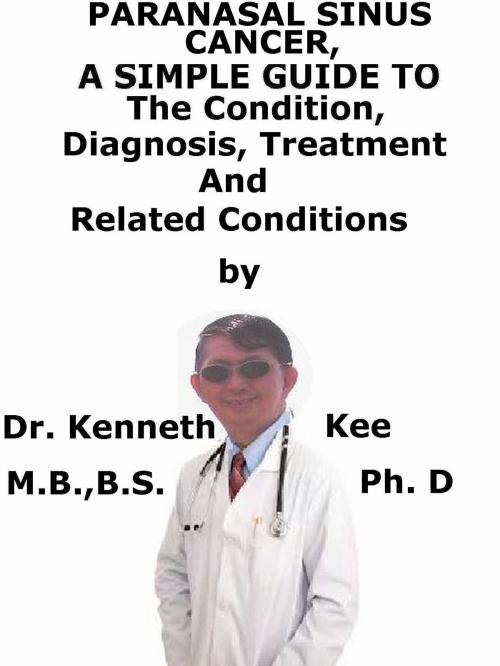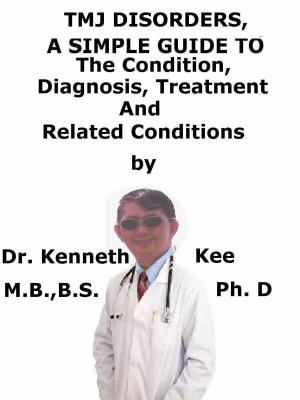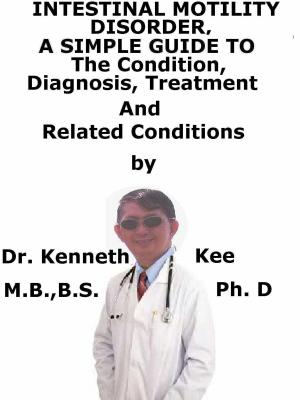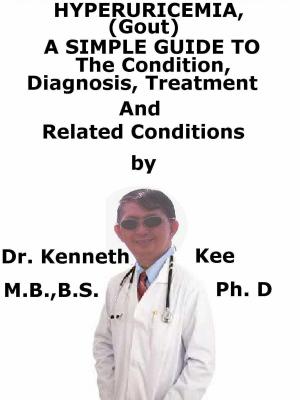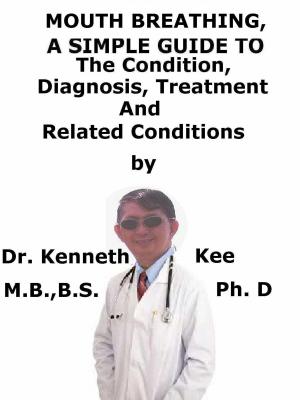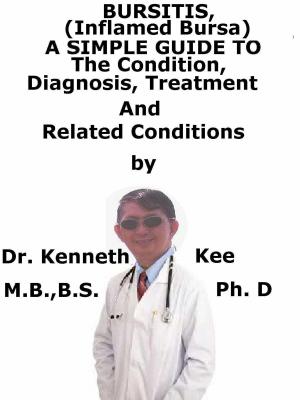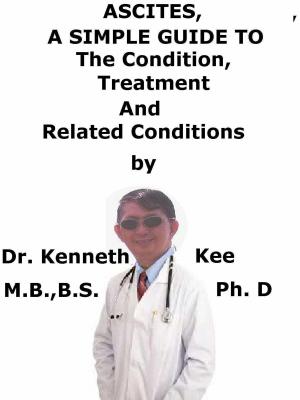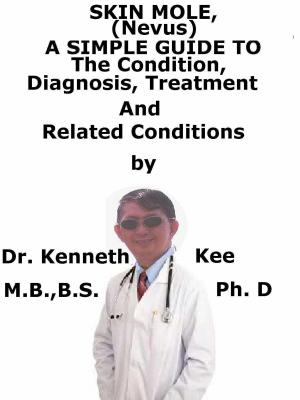Paranasal Sinus Cancer A Simple Guide To The Condition, Diagnosis, Treatment And Related Conditions
Nonfiction, Health & Well Being, Medical, Specialties, Otorhinolaryngology, Health, Ailments & Diseases, Cancer| Author: | Kenneth Kee | ISBN: | 9780463542002 |
| Publisher: | Kenneth Kee | Publication: | June 6, 2018 |
| Imprint: | Smashwords Edition | Language: | English |
| Author: | Kenneth Kee |
| ISBN: | 9780463542002 |
| Publisher: | Kenneth Kee |
| Publication: | June 6, 2018 |
| Imprint: | Smashwords Edition |
| Language: | English |
This book describes Paranasal Sinus Cancer, Diagnosis and Treatment and Related Diseases
I thought I have written a book on cancer of the sinuses but it appears that I have not.
Cancer of the Sinuses is now known as paranasal sinus cancer.
Paranasal sinus cancers affect the nasal cavity and the sinuses around the nose, which are called paranasal sinuses.
There are many sinuses around the nose and cancer can form in any of them.
Cancer that affects the nasal cavity and the paranasal sinuses is called nasal and paranasal sinus cancer.
The area where the nose and throat meet is called the nasopharynx; cancer that occurs in this area is called nasopharyngeal cancer, which is dissimilar to nasal and paranasal sinus cancer.
Paranasal sinus cancer is a form of head and neck cancer.
Different types of cells in the paranasal sinus cavity may become cancerous.
Malignant Tumors
- Squamous cell carcinoma
- Undifferentiated carcinoma
- Adenoid cystic carcinoma
- Adenocarcinoma
- Esthesioneuroblastoma
The most frequent type of paranasal sinus cancer is the squamous cell carcinoma.
This type of cancer forms in the squamous cells (thin, flat cells) lining the inside of the paranasal sinuses and the nasal cavity.
Other types of paranasal sinus cancer are: - Melanoma: Cancer that begins in cells called melanocytes, the cells that give skin its natural color.
- Sarcoma: Cancer that begins in muscle or connective tissue.
- Inverting papilloma: Benign tumors that develop inside the nose
A small number of these transform into cancer. - Midline granulomas: Cancer of tissues in the middle part of the face.
The exact cause of paranasal sinus cancers is not known, though some risk factors have been found.
Risk factors
Certain environmental agents have been linked to the formation of certain paranasal sinus cancers.
Squamous Cell Carcinoma (SCC) has been linked with items like aflatoxin which is produced by Aspergillus fungi that can colonize and contaminate grain; chromium, nickel, hydrocarbons and other organic chemicals.
Adenocarcinoma has been linked with wood dust contact.
Both these malignancies are also linked with exposure to tobacco smoke, salted and smoked foods and heavy metals.
Other risk factors are: - Infection with human papillomavirus (HPV)
- Male gender and older than 40 years
Symptoms normally involve the nose and eyes: - Epistaxis (Nose bleeds)
- Impaired sense of smell
- Feeling like one side of the nose is blocked
- Mucus coming from the nose
- One bulging eye (proptosis)
- Partial (or complete in some cases) loss of sight
- Pain around the eye and swelling in the eyes and nose
- Visual disturbances such as double vision
- Watery eyes
- Pain or numbness in the face
Diagnosis
Patients need naso-endoscopic examination and the diagnosis is made with a biopsy.
Depending on the location of the tumor, occasionally radiological investigations such at CT-scan or MRI-scan
Treatment
The type of treatment will be dependent on a number of factors, such as the stage of cancer and if the cancer has extended to other parts of the body.
Treatments that can be used to treat paranasal sinus cancers are surgery, radiotherapy and chemotherapy.
Early diagnosis and treatment improves the possibility of curing the cancer.
The treatment depends on the histology of the tumor.
Normally, most tumors of the paranasal sinuses are treated surgically with possible post-surgery radiotherapy +/- chemotherapy for certain malignant tumors.
An endoscopic operative method is often favored as it prevents any facial incisions and scars but much depends on the size and location of the tumor.
Eye operation may be needed if the eye is affected.
TABLE OF CONTENT
Introduction
Chapter 1 Paranasal Sinus Cancer
Chapter 2 Causes
Chapter 3 Symptoms
Chapter 4 Diagnosis
Chapter 5 Treatment
Chapter 6 Prognosis
Chapter 7 Cancer of Brain
Chapter 8 Cancer of the Nose
Epilogue
This book describes Paranasal Sinus Cancer, Diagnosis and Treatment and Related Diseases
I thought I have written a book on cancer of the sinuses but it appears that I have not.
Cancer of the Sinuses is now known as paranasal sinus cancer.
Paranasal sinus cancers affect the nasal cavity and the sinuses around the nose, which are called paranasal sinuses.
There are many sinuses around the nose and cancer can form in any of them.
Cancer that affects the nasal cavity and the paranasal sinuses is called nasal and paranasal sinus cancer.
The area where the nose and throat meet is called the nasopharynx; cancer that occurs in this area is called nasopharyngeal cancer, which is dissimilar to nasal and paranasal sinus cancer.
Paranasal sinus cancer is a form of head and neck cancer.
Different types of cells in the paranasal sinus cavity may become cancerous.
Malignant Tumors
- Squamous cell carcinoma
- Undifferentiated carcinoma
- Adenoid cystic carcinoma
- Adenocarcinoma
- Esthesioneuroblastoma
The most frequent type of paranasal sinus cancer is the squamous cell carcinoma.
This type of cancer forms in the squamous cells (thin, flat cells) lining the inside of the paranasal sinuses and the nasal cavity.
Other types of paranasal sinus cancer are: - Melanoma: Cancer that begins in cells called melanocytes, the cells that give skin its natural color.
- Sarcoma: Cancer that begins in muscle or connective tissue.
- Inverting papilloma: Benign tumors that develop inside the nose
A small number of these transform into cancer. - Midline granulomas: Cancer of tissues in the middle part of the face.
The exact cause of paranasal sinus cancers is not known, though some risk factors have been found.
Risk factors
Certain environmental agents have been linked to the formation of certain paranasal sinus cancers.
Squamous Cell Carcinoma (SCC) has been linked with items like aflatoxin which is produced by Aspergillus fungi that can colonize and contaminate grain; chromium, nickel, hydrocarbons and other organic chemicals.
Adenocarcinoma has been linked with wood dust contact.
Both these malignancies are also linked with exposure to tobacco smoke, salted and smoked foods and heavy metals.
Other risk factors are: - Infection with human papillomavirus (HPV)
- Male gender and older than 40 years
Symptoms normally involve the nose and eyes: - Epistaxis (Nose bleeds)
- Impaired sense of smell
- Feeling like one side of the nose is blocked
- Mucus coming from the nose
- One bulging eye (proptosis)
- Partial (or complete in some cases) loss of sight
- Pain around the eye and swelling in the eyes and nose
- Visual disturbances such as double vision
- Watery eyes
- Pain or numbness in the face
Diagnosis
Patients need naso-endoscopic examination and the diagnosis is made with a biopsy.
Depending on the location of the tumor, occasionally radiological investigations such at CT-scan or MRI-scan
Treatment
The type of treatment will be dependent on a number of factors, such as the stage of cancer and if the cancer has extended to other parts of the body.
Treatments that can be used to treat paranasal sinus cancers are surgery, radiotherapy and chemotherapy.
Early diagnosis and treatment improves the possibility of curing the cancer.
The treatment depends on the histology of the tumor.
Normally, most tumors of the paranasal sinuses are treated surgically with possible post-surgery radiotherapy +/- chemotherapy for certain malignant tumors.
An endoscopic operative method is often favored as it prevents any facial incisions and scars but much depends on the size and location of the tumor.
Eye operation may be needed if the eye is affected.
TABLE OF CONTENT
Introduction
Chapter 1 Paranasal Sinus Cancer
Chapter 2 Causes
Chapter 3 Symptoms
Chapter 4 Diagnosis
Chapter 5 Treatment
Chapter 6 Prognosis
Chapter 7 Cancer of Brain
Chapter 8 Cancer of the Nose
Epilogue
